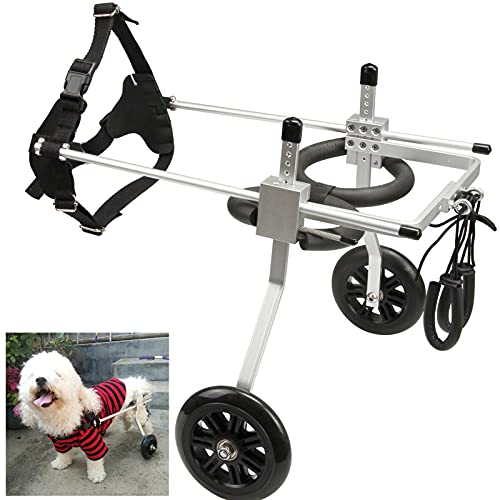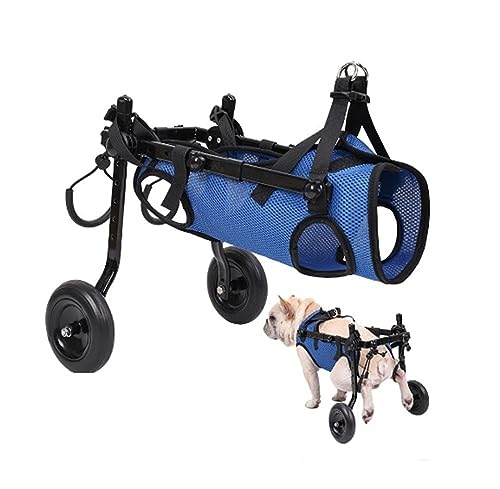Understanding the Benefits of a Dog Wheelchair
Enhancing Mobility for Disabled Dogs
A dog wheelchair primarily serves to enhance mobility for dogs that are facing physical disabilities due to injury, illness, or old age. With the right wheelchair, our furry friends can regain their independence, allowing them to enjoy walks, play, and explore their surroundings just like they used to. This improvement in mobility not only helps dogs physically but also boosts their mental health, as they can engage more fully with their environment.
Contributing to Overall Wellbeing
Using a wheelchair can lead to significant long-term health benefits. When dogs can move around freely, they maintain their muscle tone and joint health, which reduces the risk of further complications associated with inactivity. Additionally, they experience less stress and anxiety knowing they are not sidelined from everyday activities. This ultimately contributes to a higher quality of life, as they remain active participants in family life.
Choosing the Right Size and Fit for Your Dog
Measuring Your Dog for the Perfect Fit
To ensure comfort and effectiveness, it’s crucial to measure your dog accurately before selecting a wheelchair. Start by measuring their height, from the floor to their withers, and the length from their withers to the end of their back. It’s equally important to measure the width of their body. These measurements will guide us in finding a wheelchair that matches their proportions precisely, ensuring that they are both comfortable and stable.
Adjusting for Growth and Weight Changes
As dogs grow or if their weight fluctuates due to health changes, it may become necessary to adjust the wheelchair for proper fit. Look for models that offer adjustable components, so we can modify them as our dogs evolve. A good fit means our pets can move freely without chafing or discomfort, which is essential for their acceptance and use of the wheelchair.
Exploring Different Types of Dog Wheelchairs
Rear Support Wheelchairs for Mobility Challenges
For dogs that still retain some use of their front legs but struggle with their hind legs, rear support wheelchairs allow them to move around more freely while still providing that much-needed assistance. These models have a harness at the back that stabilizes the dog, allowing their front legs to paddle forward while the wheelchair supports their hind end. This design is perfect for conditions like hip dysplasia or paralysis of the back legs.
Full Support Wheelchairs for Complete Assistance
If our dog has lost all mobility in their back legs and requires more extensive support, opting for a full support wheelchair enriches their ability to get around. These wheelchairs come equipped with a tried-and-tested structure that supports both the front and rear parts of their body, offering comprehensive assistance that helps distribute their weight properly.
Tips for Getting Your Dog Acclimated to Their Wheelchair
Introducing the Wheelchair Gradually
It can feel daunting to see our dog in a wheelchair for the first time. To ease this transition, it’s best to introduce the wheelchair slowly. Start by allowing them to sniff and explore the chair while it’s stationary. Once they seem comfortable, we can gently guide them into the harness and let them take a few steps while we support them. Gradually building up the time spent in the wheelchair can foster a positive experience.
Reinforcing Positive Experiences with Treats and Praise
Positive reinforcement can go a long way in helping our dogs embrace their wheelchair. Every small success, whether it’s taking a few steps or spending time in the chair, should be celebrated with treats and praise. This will encourage our pets to associate the wheelchair with enjoyable experiences, making them more inclined to use it willingly.
Maintaining and Caring for Your Dog’s Wheelchair
Regular Inspections for Durability
To keep the wheelchair functioning optimally, we need to carry out regular inspections. Check for any signs of wear and tear, particularly around the harness and wheels. Ensuring that all parts are in good condition not only maximises the wheelchair’s lifespan but also guarantees our pet’s safety at all times.
Routine Cleaning for Hygiene and Longevity
Maintaining a clean wheelchair is essential for our dog’s health. After each use, we can wipe down the wheels, frame, and harness with a damp cloth to remove dirt and debris. Regular cleaning helps prevent any build-up that could irritate our dog’s skin or cause other issues. This simple step ensures that the wheelchair will continue to serve effectively and hygienically.





















